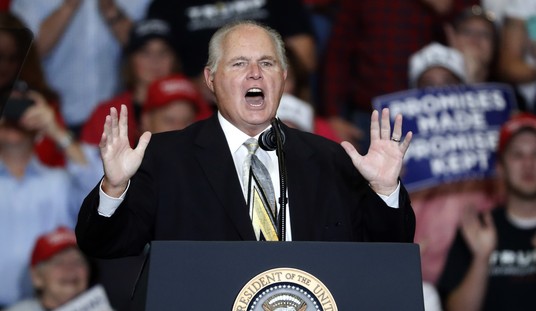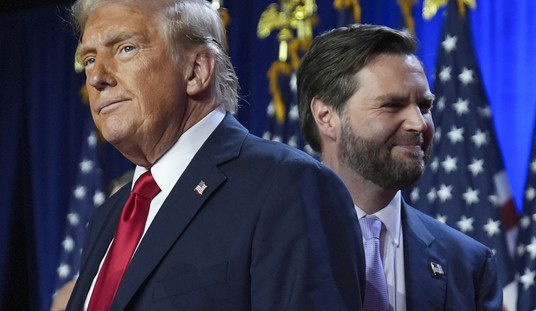It looks like the trillion-dollar “stimulus” (read: pork) bill is going to include a hefty dose of spending on schools. Of course, we don’t know yet what the proposed bill will contain, and the proposal will undergo a lot of revision when it goes through the congressional sausage grinder. But from the leaks and preliminary reports, respectable observers are estimating that as much as $70 billion or even $100 billion may ultimately end up going to K-12 schools. For comparison, after the radical expansion of federal education spending that came with No Child Left Behind, the feds now spend about $40 billion per year on K-12 education.
Politically, it’s a shrewd move. They don’t really care what they’re building, as long as they’re building something, so as long as they’re building a bunch of roads and bridges and community centers they may as well build some schools, too. The teachers’ unions have successfully spread the myth that schools desperately need more facilities spending, even though facilities spending per student almost doubled from 1990 to 2005 (after inflation). So “New School to Be Built” is always a crowd-pleasing headline.
What this will do for America’s schools is another question.
One thing it won’t do is stimulate the economy. It ought to go without saying, but alas it does not, that stimulus bills don’t stimulate. And the reason for that is worth a short digression, because it’s relevant to the effect that this “stimulating” school spending will actually have on schools.
The old Keynesian theory said that government spending could stimulate the economy by harnessing the “multiplier effect,” meaning that new economic activity will produce more new economic activity. If you click on an ad here at Pajamas Media (which you really should — why not do it right now? — but please make sure you come back here and finish reading afterward), the site’s revenue goes up. That means it will buy more of my columns. So I’ll have the money to buy that face transplant everyone tells me I need, which will increase hospital revenues, so more health care workers will be hired, increasing dues revenue at the Service Employees International Union, so they’ll have more money on hand the next time they want to sit down with Rod Blagojevich to talk about subjects like how big a bribe he’s looking for.
See? Your simple little click not only gives you access to information on the many fine products and services advertised here on Pajamas Media, it also helps facilitate egregious political corruption. Such is the power of the multiplier effect.
Trouble is, money doesn’t just appear in the government treasury ex nihilo. (Please keep reading, Senator Biden, I swear that it’s true.) To spend money stimulating the economy, government has to get the money first, removing it from the economy through taxes and/or borrowing. And when you remove money from the economy, you lose the multiplier effects from whatever people would have done with that money if the government hadn’t taken it.
So government attempts to harness the multiplier effect don’t produce a real stimulus. They just move the multiplier effect from one part of the economy to another.
Of course, if some economic activities create a greater multiplier than others, you might still believe government spending can create a stimulus by directing economic resources to the more “stimulating” activities. But only if you think that when government takes control of economic resources, it will direct those resources intelligently and benevolently to the “right” economic activities.
If so, you might also believe in the tooth fairy.
And this brings us back to the subject of schools. I suspect that pretty much nobody in Congress really believes the Keynesian theory. There are two real motivations behind all stimulus bills. First, it creates an opportunity for politicians to claim credit for any good economic news that subsequently comes along. Second, it’s an excuse to shovel money at powerful constituencies, from whom you can later demand reciprocal support.
It’s the latter reason that will determine how the new school spending in the stimulus bill will be spent. The money won’t go where it’s needed. It will go to the gravy train.
One reason to expect this is because that’s how government always spends money. An illustration will help here. The stimulus bill will no doubt build tons of bridges, and with bridges you don’t have nearly as much controversy as you do in education over what policies would serve the public interest best. So let’s look at the government’s track record on bridge-building.
Never mind the “bridge to nowhere.” While it’s a great symbol of pork run amok, in objective terms it’s a pretty small case.
But do you remember that huge bridge collapse in Minneapolis a year and a half ago? In the immediate aftermath, some people rushed to blame the deaths on hard-hearted budget cutters. But it quickly came out that plenty of money was being spent on road and bridge repair. Trouble is, that money wasn’t used to repair the city’s major bridge, despite the bridge having been rated “structurally deficient” for two years.
This was a really easy case. Here’s this huge bridge in a big city that tons of people used every day, and that the government’s own engineers said was in desperate need of repair — and the politicians had plenty of money available to repair it. But they preferred to spend the money on projects that enriched their friends, or generated votes in swing districts, or whatever.
That’s how government spending works.
But there’s an even stronger reason to expect stimulus spending on schools to produce no improvement. With schools, we’ve measured the effects of spending increases over and over again — and we’ve consistently found that they make no difference.
There have been literally hundreds of empirical studies examining whether educational outcomes are related to spending increases. This body of evidence has consistently found that spending more money bears no relationship with the results we get from schools. In fact, the total amount we spend per student has more than doubled in the past 40 years, after accounting for inflation, while educational outcomes are flat over the same period.
So what will this radical expansion of federal education spending actually do? It will direct more money into the gravy train that already siphons off countless billions of dollars from schools every year. It will help the government education monopoly continue to postpone desperately needed reforms that a tighter budget might force it to consider. And a lot of that money will find its way to the staff unions and other interest groups that stand in the schoolhouse door against any change in education policy.
In other words, it’s business as usual.









Join the conversation as a VIP Member